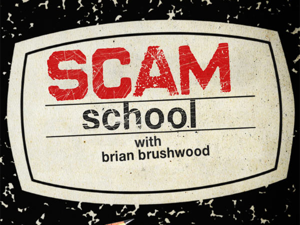 Ever try and solve a puzzle involving physical objects, such as cards, coins, or chips, with your eyes closed?
Ever try and solve a puzzle involving physical objects, such as cards, coins, or chips, with your eyes closed?
Despite the challenging conditions, this is just what you're going to learn in today's post! Even better, the solution is ingeniously simple.
Let's get right to the puzzle, shall we? It's presented in its basic puzzle form in this week's episode of Scam School. Before you play the video, grab 10 cards, and try and work out the puzzle before viewing the solution.
Did you solve it on your own? If so, congratulations! Even if you didn't, you should at least have viewed the solution before moving on from this point.
Now, let's try a similar puzzle, but we're going to throw a bit of a curve into it. Add another card to your group of 10, so you now have 11 cards. Just as before, mix them so that some are face-up and some are face-down. You challenge is to separate these 11 cards into 2 groups, so that both groups contain the same number of face-up cards. James Grime has a video puzzle version of this, using chips instead of cards.
Why is this version so much more challenging? There's no way to divide 11 into 2 piles of the same number of cards (or chips, coins, etc.), and that was such an important feature of the previous version.
Once again, try working it out for yourself with cards in hand, before peeking at the solution. When you're ready, here's James Grime with the solution to dealing with odd numbers of objects:
As you see, you need extra information to solve this latter version of the puzzle.
While this does make an interesting puzzle, it can also be turned into a magic trick quite easily. Bob Hummer and Jack Yates created a trick using this principle called Time Will Tell. That version uses 12 pennies, arranged in a clock formation, with some marker identifying one of the pennies as the 12 o'clock position. The performer turns away from the proceedings, and asks the volunteer to turn over any 6 pennies. Without looking at which coins were flipped and without asking any questions, the performer then separates the pennies into 2 groups, both with the same number of heads and tails in each group.
In the original version of the trick, you set up all 12 coins with heads up. As you've seen, however, this really doesn't matter. They can start with any number of heads and tails showing, and have them do several prescribed flips, and you can still separate the groups into 2 sets with equal amounts of heads and tails. Instead of simply having your back to the proceedings, you can even do this over the phone.
Whether you see it as a puzzle or a magic trick, this is a fun exercise to analyze and figure out why it works. If you develop any interesting versions of this routine, I'd love to hear about it in the comments!
0
Divide and Conquer
Published on Thursday, July 18, 2013 in fun, magic, math, playing cards, puzzles, Scam School, videos
Related Posts
Post Details
Posted by Pi Guy on Jul 18, 2013
Labels:
fun,
magic,
math,
playing cards,
puzzles,
Scam School,
videos
Subscribe to:
Post Comments (Atom)




No Response to "Divide and Conquer"
Post a Comment